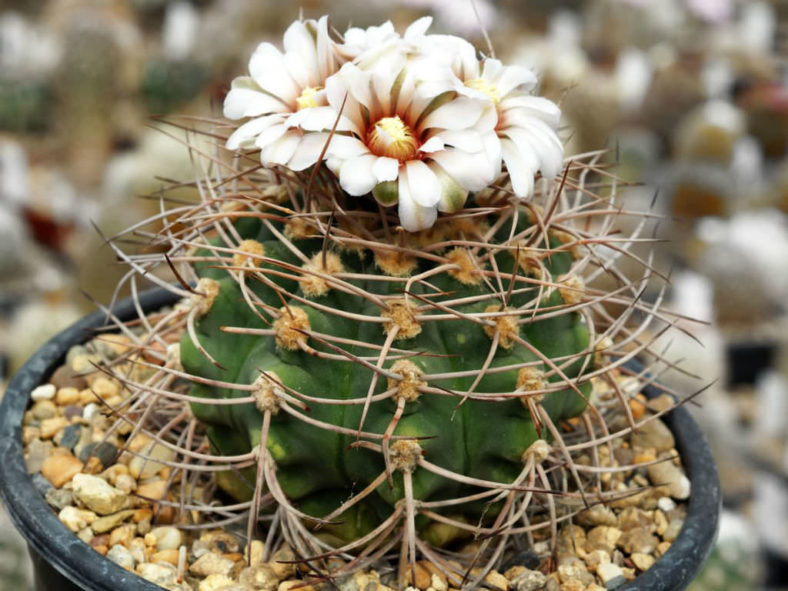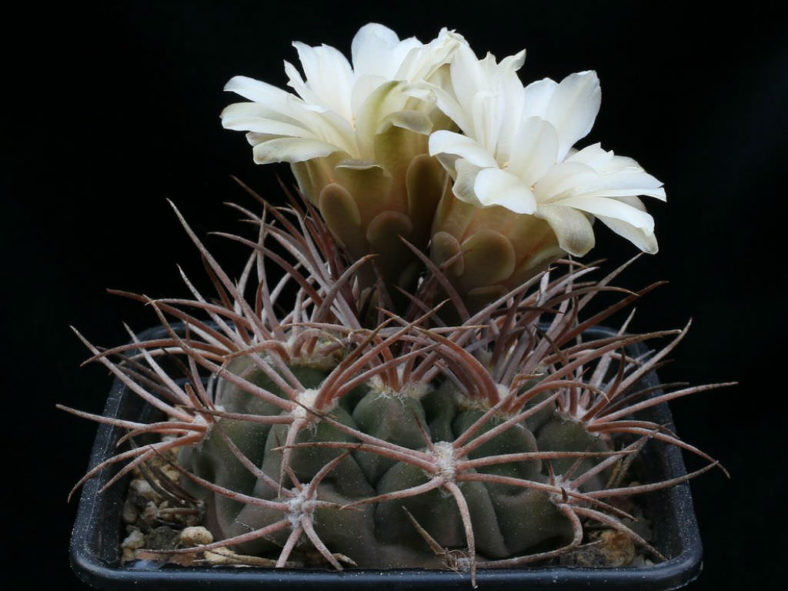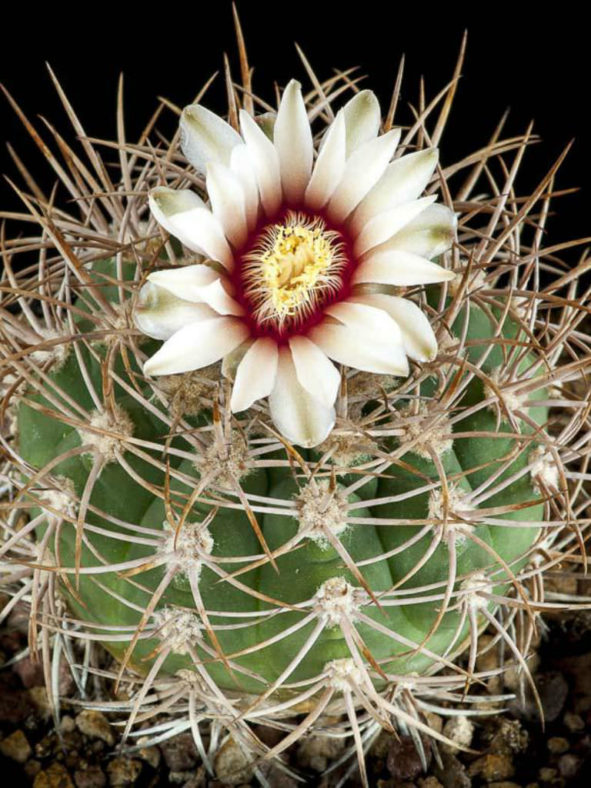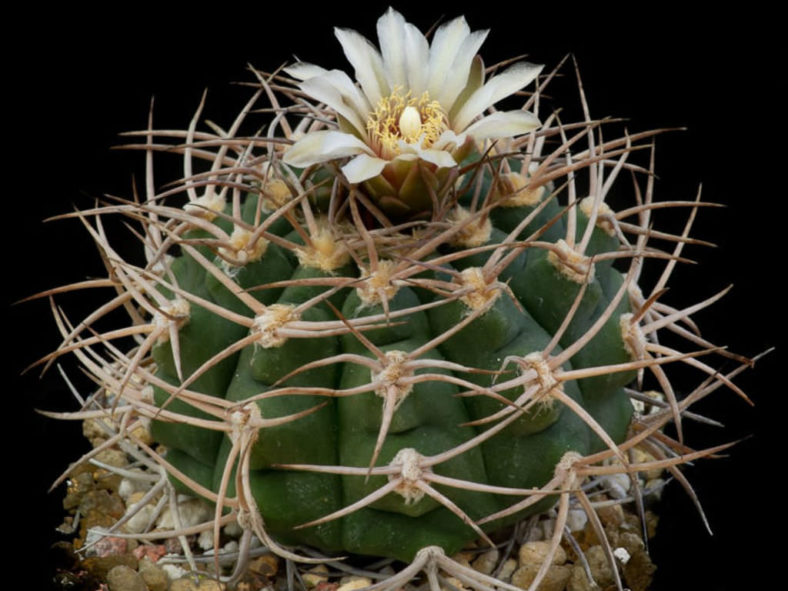Scientific Name
Gymnocalycium castellanosii Backeb.
Synonym(s)
Gymnocalycium castellanosii subsp. castellanosii
Scientific Classification
Family: Cactaceae
Subfamily: Cactoideae
Tribe: Trichocereeae
Genus: Gymnocalycium
Origin
Gymnocalycium castellanosii is native to Argentina.
Description
Gymnocalycium castellanosii is a small cactus with a solitary, green to bluish-green stem with 10 to 12 ribs lined with clusters of 5 to 10 heavy spines. The stem is globose to flattened-globose and can grow up to 4 inches (10 cm) tall and 6 inches (15 cm) in diameter. The spines are slightly curved back, measuring up to 1 inch (2.5 cm) long, and can be whitish, greyish, or brownish, with a darker tip. Each areole bears 5 to 8 radial spines and no (rarely one or two) central spines.
The flowers appear in spring and summer and are white to light pink with a pink or reddish throat. They are funnel-shaped and can reach up to 1.8 inches (4.5 cm) in diameter.

Hardiness
USDA hardiness zones 9b to 11b: from 25 °F (−3.9 °C) to 50 °F (+10 °C).
How to Grow and Care
Some Gymnocalyciums seek shade in the wild, among shrubs or grasses, while others grow completely exposed. Therefore, some need light shading from the sun in the hottest months, but overdoing this will result in losing flowers.
The balance of the potting medium should be sufficient to allow good drainage so that the plants do not sit in soggy soil for more than a day or two after watering.
Watering in the summer while the plants are growing well can be frequent (weekly for small plants in small pots), but always allow the compost to nearly dry out before rewatering. Watering in the winter months is unwise and certainly not necessary. The difficult times are spring and autumn.
Those species which produce offsets can be readily propagated by cuttings. Gymnocalycium seed germinates well when fresh and will keep for a few years if stored in cold conditions.
Learn more at How to Grow and Care for Gymnocalycium.
Links
- Back to genus Gymnocalycium
- Succupedia: Browse succulents by Scientific Name, Common Name, Genus, Family, USDA Hardiness Zone, Origin, or cacti by Genus
Photo Gallery
Click on a photo to see a larger version.


